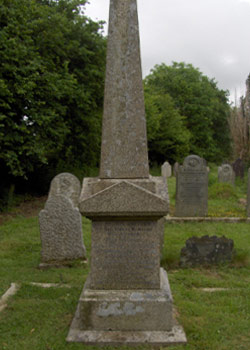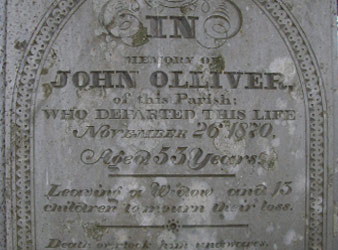| Home - History - Restoration - Flora & Fauna - Burial Records . Image Gallery - Contact Us | |
Welcome to the St Cleer general Cemetery Website
St Cleer is a rural area with a history of settlement going back to the Bronze Age some 5000 years ago. In the early 19th Century the population was approximately 3000, but declined rapidly with the collapse of the mining industry. Figures have risen again in the last two decades and at the 2001 census there were 3257 people. The main village area and the surrounding hamlets are in an Area of Great Landscape Value with the moorland areas being designated as an Area of Outstanding Natural Beauty. The area is also part of the World Heritage Site for Mining. The people of the area have always been of an independent spirit, the Caradon Miners’ and Mechanics’ Friendly Society formed in 1842 in St Cleer was one of the earliest manifestations of Trade Unionism. The Chapel was built by these same men in 1864 for the use of Dissenters who were denied burial by the established church after a lifetime of nonconformity.
Their Constitution, which is indeed written in stone above the Chapel door, does not however exclude anyone from burial and lays down the management rules. The trustees still manage the Cemetery but it becomes harder with the passing years to recruit members and expenses are beginning to outstrip the income from burials. When the Cemetery is full, in approximately twenty years, there will of course be no further income. It is for this reason that the Parish Projects Group have sought to restore the building and record as much as possible for the future. The burial ground around the chapel has been in use since 1860 and every grave and its occupant are recorded and all the minutes of the Trustees meetings going back to that date are available for research. The burial ground is still used and has an expected 20 years of further availability. The Cemetery is a haven for wild life and during the year a succession of flowers bloom, particularly in spring when snowdrops and crocuses are followed by narcissi and primroses. There is also a thriving bird population with many species breeding. All the headstones are still in situ on the graves and carry clear and poignant messages from those left behind as well as hinting at some fascinating stories.
As you wander round the cemetery and read what has been inscribed onthe headstones it makes you wonder about the lives of the people concerned There is one plot of the Trethewy family, not overlarge, with an impressive obelisk in the centre. At one time this plot had iron railings but these were A further plot holds the remains of John Olliver. He left a widow and 13 children and I always feel that here is a note of complaint in this stone.
Why not wander round yourself and let your imagination conjure with the words. If you are reading this on the internet go to burial records and browse through the more info. Derris Watson - Group Secretary and Vice Chair |
QUICK LINKS
Burial Records Trustee Minutes Restoration Work How to find the Chapel Burial Charges
|


 Every Headstone tells a Story.
Every Headstone tells a Story. obviously ripped out for the war effort. The granite kerb was damaged when this happened. The obelisk refers to the members of the family with details like 2nd daughter and 5th son. Two sides show sons who had emigrated to other mining areas around the world, South Africa and the USA.
obviously ripped out for the war effort. The granite kerb was damaged when this happened. The obelisk refers to the members of the family with details like 2nd daughter and 5th son. Two sides show sons who had emigrated to other mining areas around the world, South Africa and the USA. The other one which always intrigues me is Albert, the beloved son of Edmund Snell and Lavinia Broad. He died at only 16 months and his headstone is both prominent and beautifully made. I wonder whether he was in fact born out of wedlock or whether his father Edmund had died and his mother remarried to a Mr Broad.
The other one which always intrigues me is Albert, the beloved son of Edmund Snell and Lavinia Broad. He died at only 16 months and his headstone is both prominent and beautifully made. I wonder whether he was in fact born out of wedlock or whether his father Edmund had died and his mother remarried to a Mr Broad.